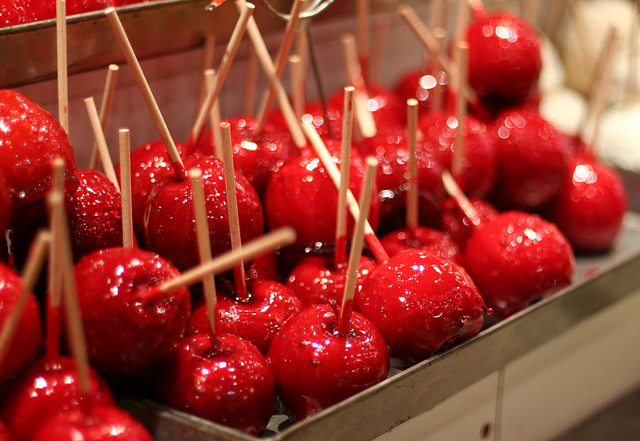Christmas in France

In France, a Nativity crib is often used to help decorate the house. French cribs have clay figures in them. During December some towns and cities, such as Marseilles, have fairs that sell Nativity figures. As well as having the normal Nativity figures in them, French scenes also have figures such as a Butcher, a Baker, a Policeman and a Priest.
In French Happy/Merry Christmas is 'Joyeux Noël'. In Breton (spoken by some people in Brittany, Northern France) it's 'Nedeleg Laouen', in Corsican it's 'Bon Natale' and in Alsatian (spoken by some people in Alsace, in Eastern France) it's 'E güeti Wïnâchte'. Happy/Merry Christmas in lots more languages.
One of the biggest Christmas markets in Europe is held in Strasbourg, in North Eastern France. In the Alsatian language it's called the "Christkindelsmarik".
Yule Logs made out of Cherry Wood are often burned in French homes. An old tradition is that the log was carried into the home on Christmas Eve and sprinkled with red wine to make the log smell nice when it was burning. There is a custom that the log and candles are left burning all night with some food and drinks left out in case Mary and the baby Jesus come past during the night.
In France, Father Christmas / Santa Claus / St. Nicholas is called Père Noël (Father Christmas). In eastern France he is accompanied by Le Pere Fouettard, a man dressed in black. He might be the same person as Zwarte Piet/Sooty Piet/Roetpiet in The Netherlands. In the region of Franche-Comté, a historic gift bringer is 'Tante Arie' (a figure like Befana who's based on a real Countess from the 12th and 13th centuries).
The main Christmas meal, called 'Réveillon', is eaten on Christmas Eve/early Christmas morning after people have returned from the midnight Church Service. Dishes might include roast turkey with chestnuts or roast goose, oysters, foie gras, lobster, venison and cheeses. For dessert, a chocolate sponge cake log called a bûche de Noël is normally eaten.
Another celebration, in some parts of France, is that 13 different desserts are eaten! All the desserts are made from different types of Fruit, Nuts and Pastries.
Epiphany (Épiphanie in French), called La Fêtes des Rois in French, is also celebrated in France on January 6th. A flat cake/tart made with and puff pastry and almond cream is eaten called 'Galette des Rois'. The cake traditionally has a 'fève' baked inside it (or put in the cream on the top). The fève was originally a bean (often made from porcelain, ceramic or metal). Now it can be a little crown, a figure or other shapes/small ornaments. The Galette des Rois is decorated on top with a gold paper crown. If you find the fève you wear the paper crown and are meant to bring the Galette des Rois the following year!
There's more information about Christmas in France on the French Moments website (goes to another site)

